Australia’s emblematic beauties illustrated

NATIVE FLOWERS ARE part of our cultural heritage and vital to sustaining Australia’s unique ecosystems.
We have about 21,000 species of native flowering plant, and they are celebrated in festivals and gardens nationwide. They emblazon flags, coins, bank notes, stamps and sports jerseys, and are often presented to dignitaries and sporting heroes.
Nine are officially recognised as national, state, and territory floral emblems – including the golden wattle (Acacia pycnantha) that inspires our national colours. And they feature alongside Australia’s bird and mammal emblems on official coats of arms.
Australian Capital Territory

Royal bluebell Wahlenbergia gloriosa
A protected species that cannot be collected from the wild, this small perennial alpine herb grows close to the ground in open areas, rocky outcrops and woodlands in the Australian Alps. Its vivid blue/purple flowers grow to about 3cm wide, on the ends of long, slender stems and attract insect pollinators. It’s often mistaken for the more common, widespread tall bluebell (Wahlenbergia stricta).
New South Wales

Waratah Telopea speciosissima
This waratah is found along the NSW central coast and throughout the adjoining mountains, particularly around Sydney and in the Blue Mountains. It grows as a large shrub that can reach a height of 4m and produces large inflorescences made up of many small individual flowers, surrounded by crimson petal-like bracts. Hundreds of flowers open together, creating a bright beacon that attracts native birds.
Victoria
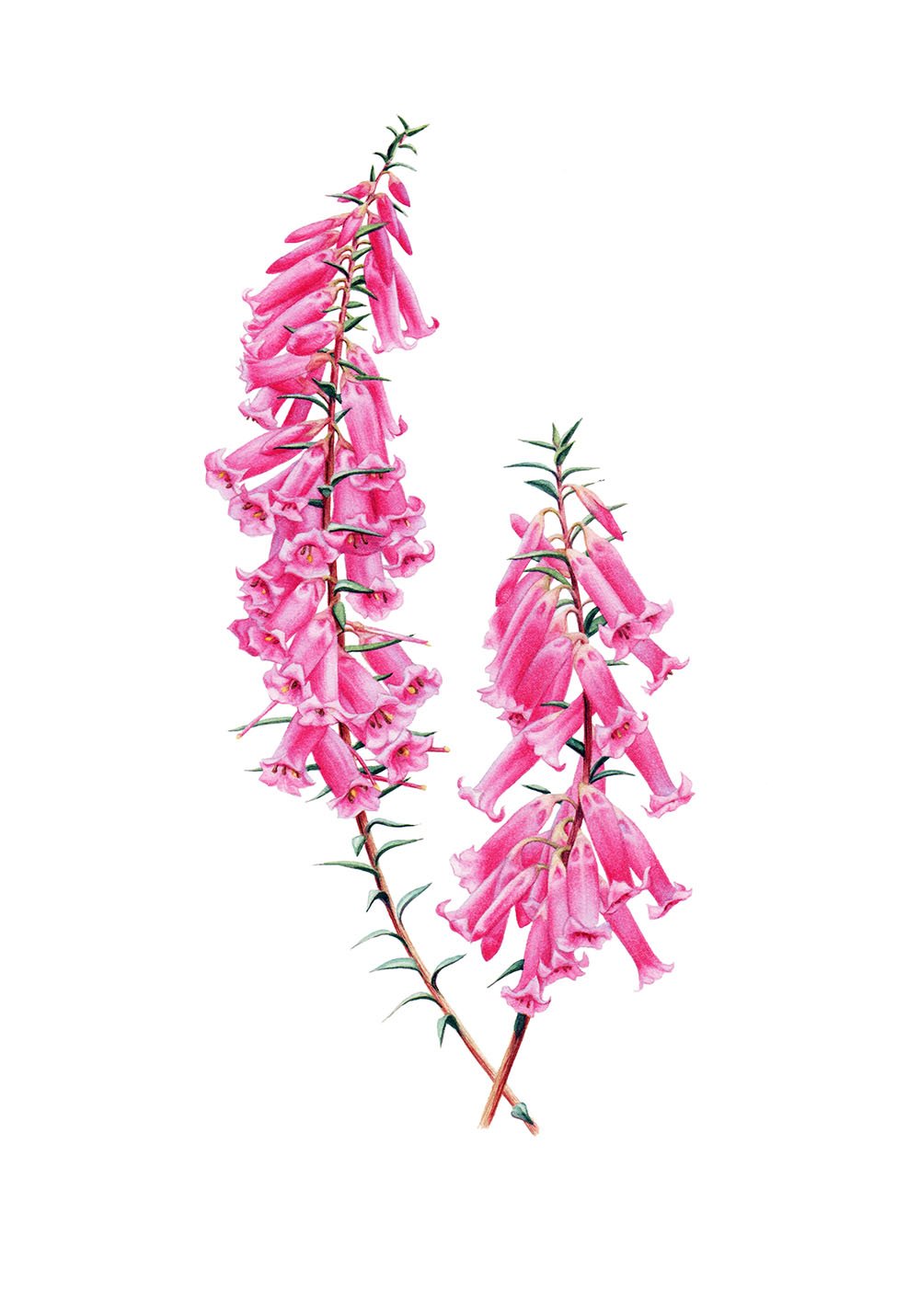
Common heath Epacris impressa
Victoria was our first state to adopt an official floral emblem and the pink-flowered form of this species was it. A slender, upright shrub growing to about 1m tall, the common heath produces stems lined with many tubular flowers that range from pale white to deep red. Small birds often perch among the short spiked leaves, where they can feed on the nectar produced by the flowers.
South Australia
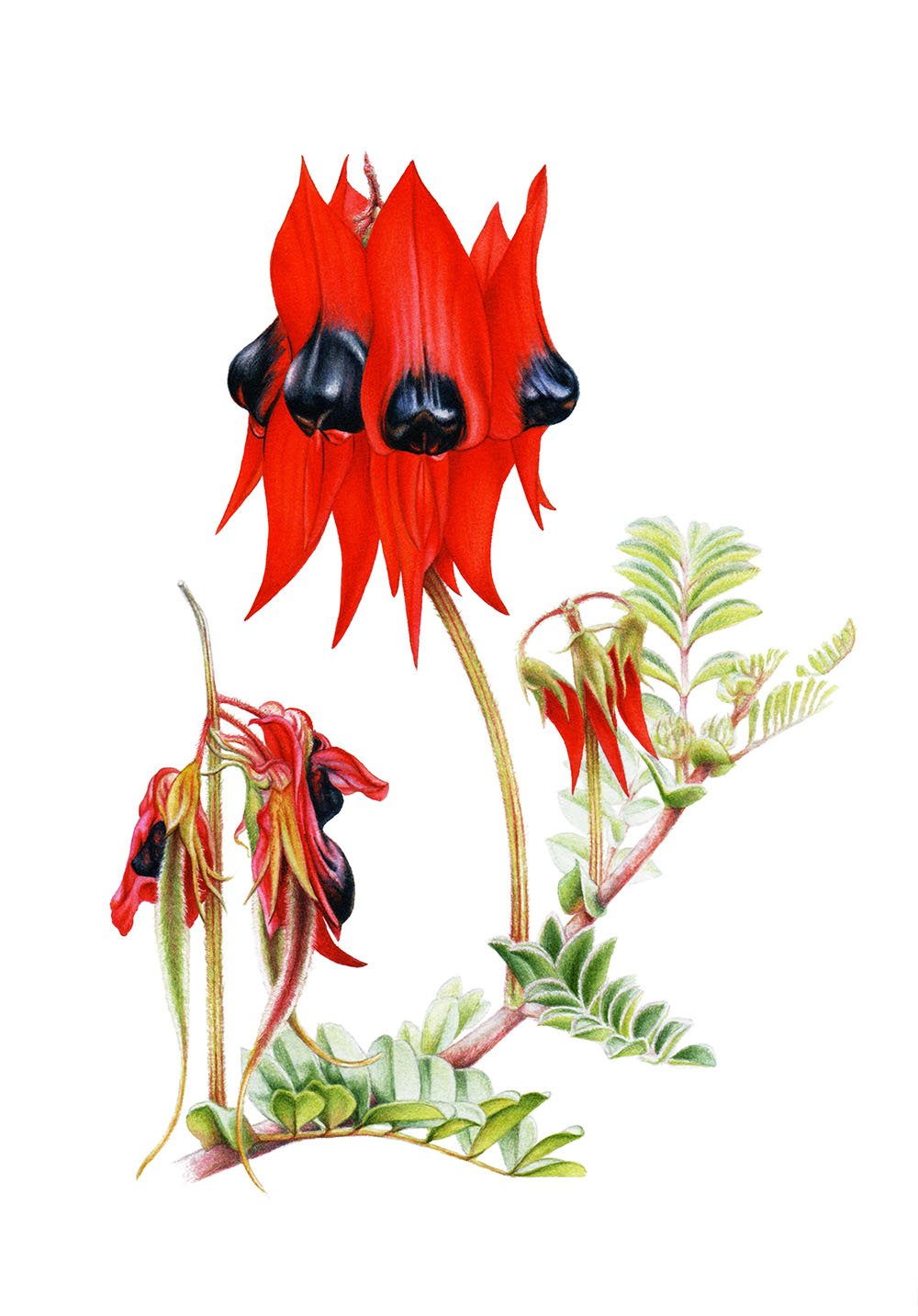
Sturt’s desert pea Swainsona formosa
Sturt’s desert pea, which grows in sandy soils across much of Australia’s arid interior, is pollinated by nectar-feeding birds. Each inflorescence bears six or seven usually bright red flowers with black bulbous centres, which birds probe with their beaks to reach sweet nectar within. As they feed, pollen is deposited on the birds’ abdomens and transferred between different flowers.
Tasmania
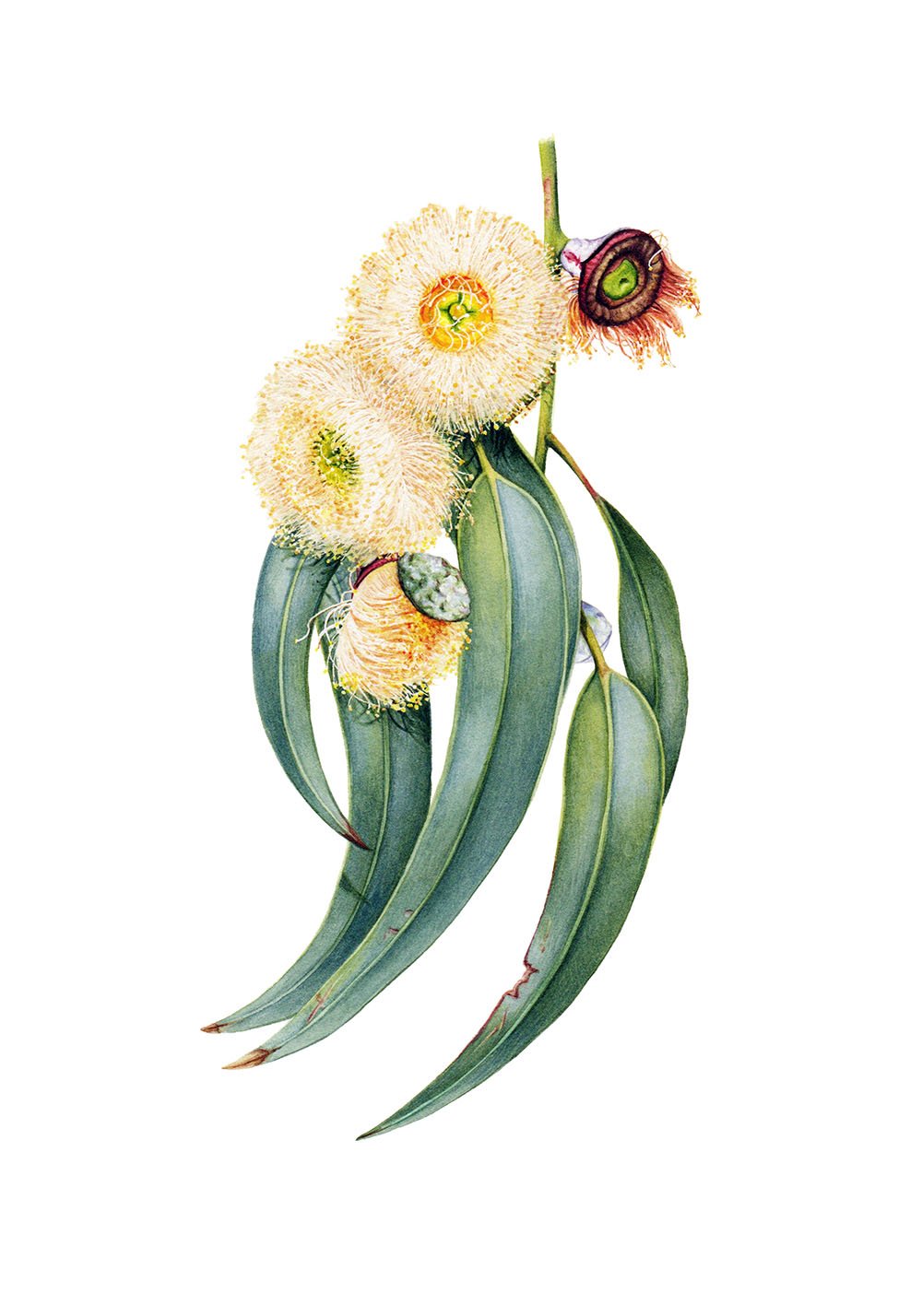
Tasmanian blue gum Eucalyptus globulus
This large, straight-trunked tree grows to about 70m tall in open forests in south-eastern Tasmania, on Bass Strait islands and in parts of southern Victoria. Its common name comes from the waxy blue-green colour of its juvenile leaves. The plant’s cream-coloured flowers are a good source of nectar for bees and the resultant honey is dense and strongly flavoured.
Queensland

Cooktown orchid Dendrobium bigibbum
This orchid was selected during Queensland’s centenary celebrations in 1959 as the state’s floral emblem. An epiphyte that grows on the trunks of large trees, its natural range is restricted to the Cape York Peninsula in the far north, where it flowers for six weeks in autumn and winter. It’s widely cultivated and exported commercially, but protected wild specimens are threatened by illegal collecting.
Northern Territory
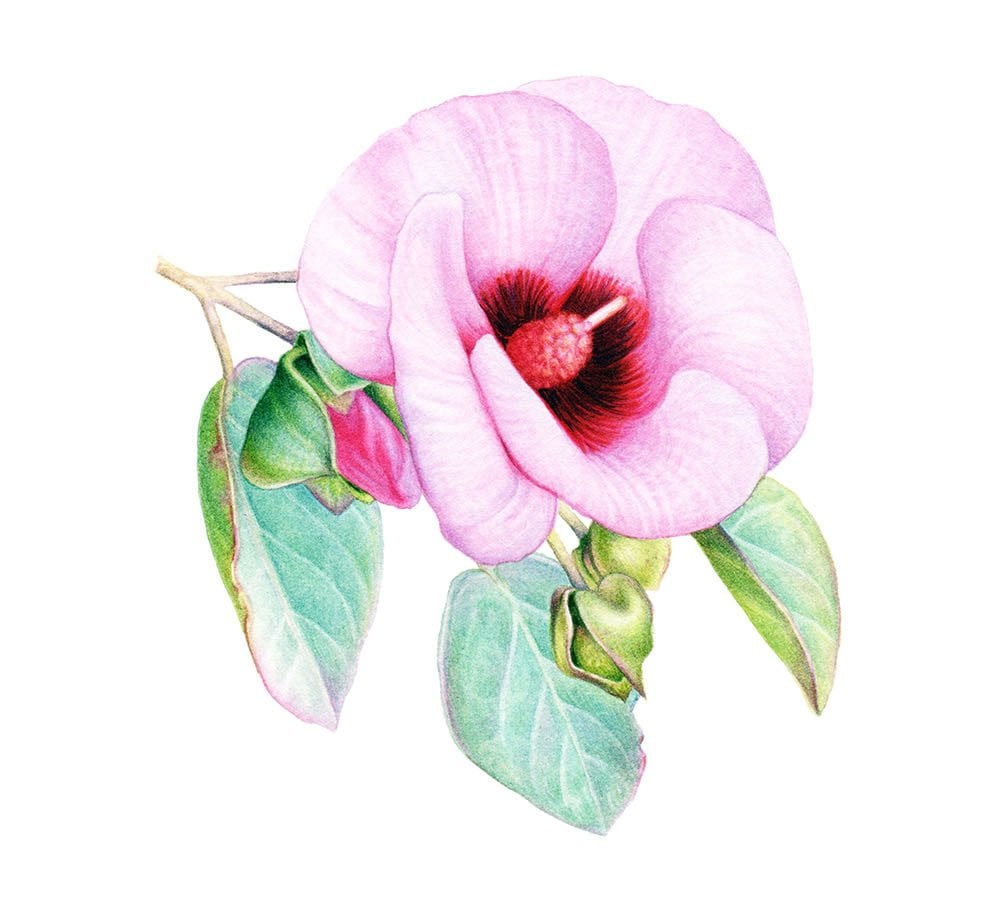
Sturt’s desert rose Gossypium sturtianum
Closely related to species of commercial cotton, this is not a rose at all. It’s a drought-tolerant shrub that is found on rocky slopes and in dry creek beds throughout Central Australia, and produces pretty mauve- and lilac-coloured flowers with red centres. The five-petalled flower is depicted on the NT’s flag with seven petals, representing Australia’s six states and the NT.
Western Australia
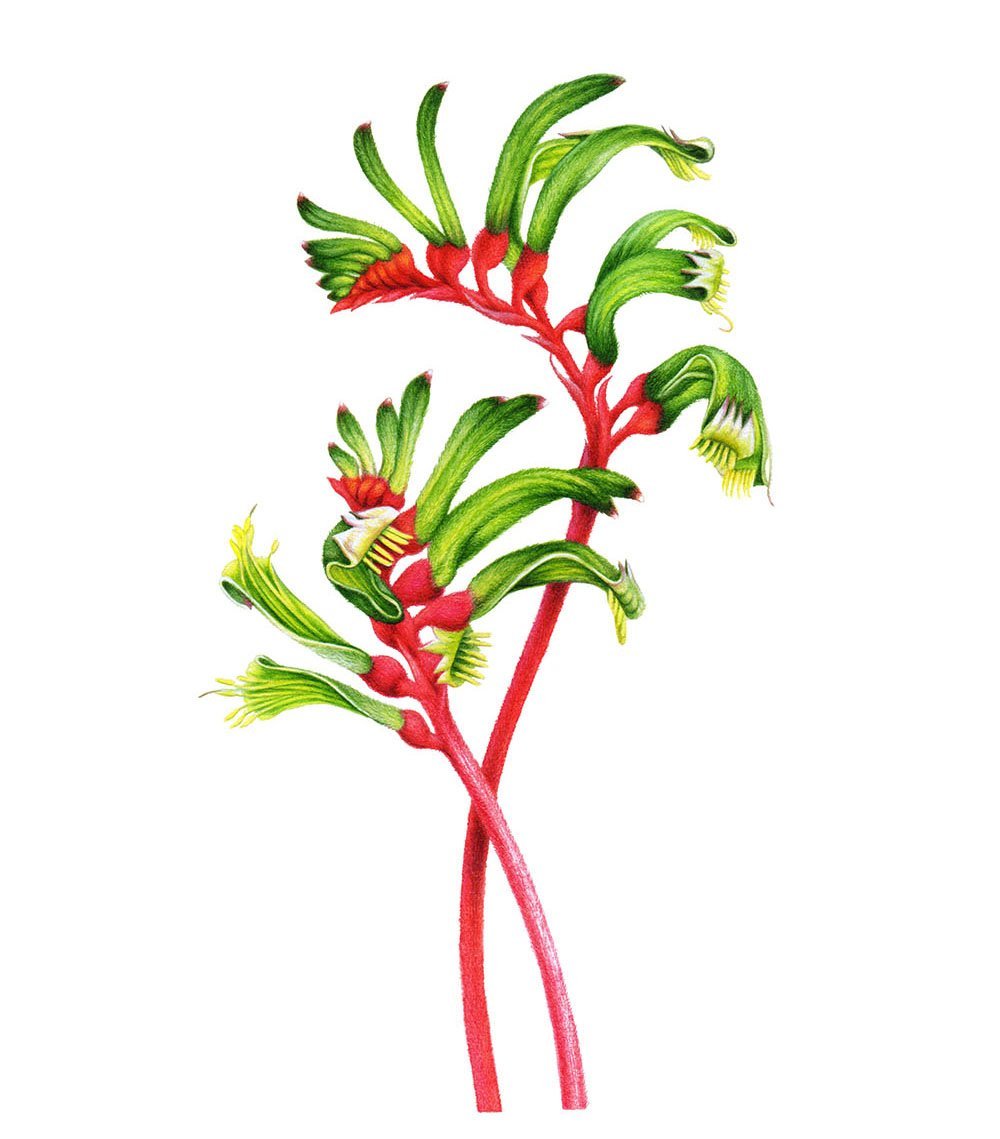
Red and green kangaroo paw Anigozanthos manglesii
Kangaroo paws are restricted to WA’s south-west, and are found nowhere else in the world. These strap-leaved plants produce bright red flower stalks that grow to about 1m and bear vivid green flowers. The stems and bases of the flowers are covered in hairs. When mature, the flowers split open to reveal their smooth, pale green interiors.
All Illustrations by Heidi Willis.
This article was originally published in the Nov-Dec 2015 issue of Australian Geographic (AG#130).




